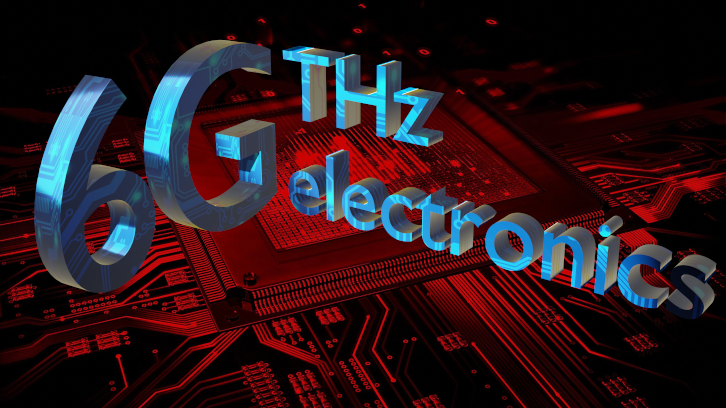An alternative type of electron current could help rethink electronic engineering for high frequency applications

Electrons travelling along an electronic device produce an oscillating electric field which propagates along the device towards the metallic contacts. This phenomenon generates a new current called displacement current, and its propagation speed is by nature much faster than the dynamics of electrons producing it. This component is however, in general, ignored by time-independent quantum transport model. In a recent work, using the Bohmian formulation of quantum mechanics, the research group led by Prof. Xavier Oriols has developed a time-dependent model to include this new component in the estimation of the total current in quantum devices. The consideration of the displacement current proposed in the work opens many new opportunities for TeraHertz (THz) electronics in quantum scenarios.
Miniaturization has always been the key tool for electronic devices to reach higher working frequencies, since it decreases the time spent by an electron to cross the device (the so-called transit time).
It is known that if a device's voltage varies faster than this time, electrons will not follow the voltage signal, breaking the linearity of Ohm's law.
This new regime is not well predicted in usual time-independent quantum electron transport approaches, which are focused in DC analysis. The missing element in previous approaches is the fact that current in a wire is not only due to electrons crossing a region of space, but also to the electric field that these electrons produce while travelling. This current component is called displacement current and it is by its own nature faster than the dynamics of the electrons travelling.
As a consequence, in this new high frequency regime, new possibilities arise for high frequency nanoelectronics if the displacement current is properly introduced in quantum scenarios.
In this work led by Prof. Xavier Oriols [1], member of the Department of Electronic Engineering, the displacement current has been included in a new type of Landauer model [2] for electronic transport, overcoming the unjustified idea that the THz quantum devices have the same current-voltage characteristic of the DC systems, but just with a faster performance. This work is based on an original, but well established, type of quantum theory called Bohmian mechanics [3]where the reality of the position of the electron do not depend on the fact of being measured or not.
This new model has been used to predict non-linearities for a Resonant Tunnelling Diode device, when working above its transit time limit. These non-linearities cannot be predicted by time-independent DC models mentioned above.
With our new model such non-linearities can be effectively estimated and engineered to increase the applicability of THz quantum electronics and improve its performance. As an example, by re-designing, with the use of this new displacement-current concept, many widely used devices such as frequency multipliers, rectifiers, modulators to reach higher working frequencies, reaching the THz regime.
This can be achieved by avoiding going below 10-nm miniaturization and thus improving production reliability, thermal stability, and heat dissipation of future nano-devices.
Our work will further push the boundaries of quantum nano electronics well inside the so-called THz frequency gap, that in the next future will be occupied by the 6G telecom technology.
Matteo Villani
Department of Electronic Engineering
Universitat Autònoma de Barcelona
References
[1] M. Villani, X.Oriols, S. Clochiatti, W. Prost, N. Weimann, There is Plenty of Room for THz Tunneling Electron Devices Beyond the Transit Time Limit, El. Dev. Lett., 2021, 42, 2.
[2]R. Landauer, Electrical Resistance of Disordered One-Dimentional Lattice, Phil. Mag., 1969, 863.
[3]Bohm, D. A Suggested Interpretation of the Quantum Theory in Terms of "Hidden" Variables. Phys. Rev., 1952, 85, 166.


